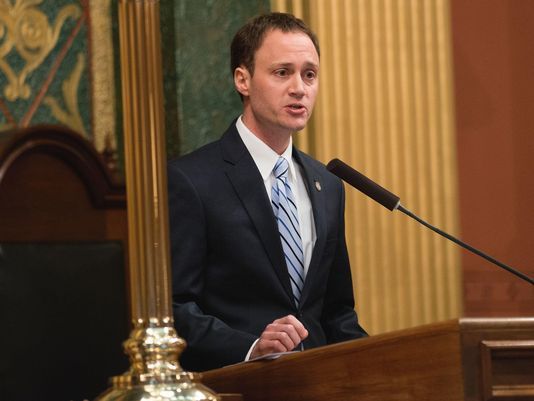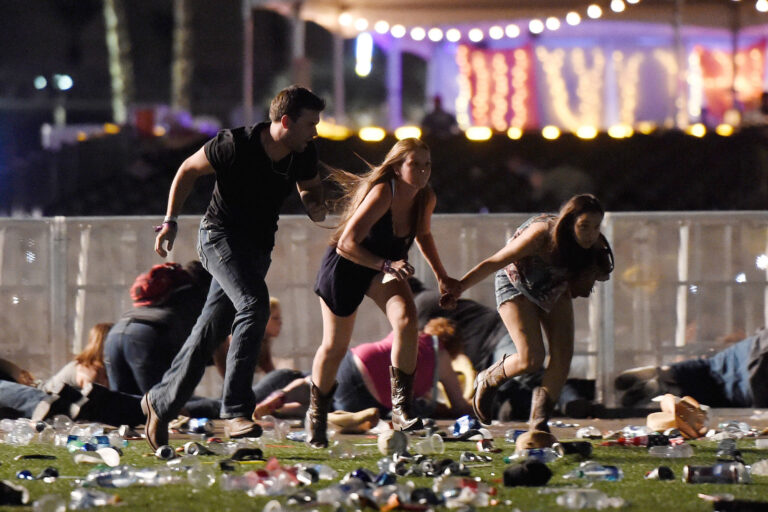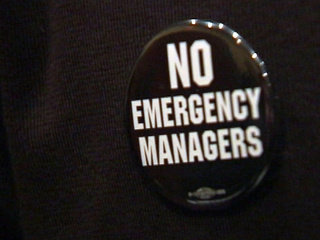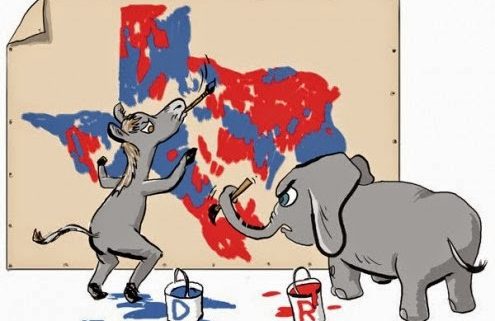Internal Scholarship
Filter
Post List

Clearing the Smoke: Marijuana Reform is a Racial Justice Issue
By David Bergh Associate Editor, Volume 23 Over the past few decades there has been a sea change in the American public’s attitude towards marijuana prohibition. In 1990 only 16% of the US public supported legalization, and 81% were opposed. Twenty seven years later the numbers were 61% in favor of legalization and 37% against.[1] This tectonic shift in opinion is reflected in the fact that there are now 29 states, including Michigan, with medical marijuana programs.[2] Additionally, nine states and the District of Columbia have legalized the recreational use of marijuana.[3] Michigan looks set to join the recreational club this November, as the Michigan Marijuana Legalization Initiative is all but certain to appear on ballots for the 2018 election.[4] The ballot initiative proposes to legalize the recreational use of marijuana for persons 21 and older. Those wishing to sell or produce recreational marijuana will need to obtain a license from the state, and local governments will be able to decide if they want to allow recreational marijuana business within their borders.[5] While the passage of the Michigan Marijuana Legalization Initiative would be a step forward towards addressing the racially disparate impact of the War on Drugs, the proposed Act is no panacea. The movement toward legalization and the public’s growing acceptance of marijuana has thrown the racialized impact of the War on Drugs into sharp relief. On one hand the New York Times trumpets the investment opportunities that the legalization movement has created,[6] and white millennials flock to “ganja yoga” classes in San Francisco.[7] On the other hand Black Americans continue to bear the brunt of drug enforcement, with a police raid on a birthday party in Georgia that led to the arrest of 63 people for less than an ounce of marijuana being only the most recent and widely reported example.[8] So far, neither the nation’s changing marijuana laws, or the shift in public opinion have had a positive effect on the War on Drugs. Marijuana arrests rose in absolute terms from 2000 to 2013, and Blacks are still nearly four times to be arrested for marijuana possession than whites, despite nearly identical rates of usage.[9] This disparity in the treatment of marijuana use is particularly severe in some parts of Michigan, with Black residents of Monroe, St. Clair and Jackson counties being 15 times more likely to be arrested for marijuana possession than their white peers.[10] This reflects the fact that Michigan’s prison population is majority-minority, despite non-Hispanic whites accounting for more than 75% of the state’s population.[11] Even discounting a jail sentence, the effects of a marijuana arrest can be serious and long-lasting. Having a possession arrest on your record can affect custodial rights, public benefits, financial aid for college, and employment prospects, as having any criminal record, even for a minor drug arrest, cuts a job applicant’s chances of getting a call-back in half.[12]
Without My Consent: The Eradication of Protective Consent Decrees
By Rasheed Stewart Associate Editor, Volume 23 The 1994 Violent Crime Control and Law Enforcement Act, passed following the publicly videotaped 1991 beating of African American motorist Rodney King by four LAPD officers and the catastrophic Los Angeles Riots a year later, gave the Civil Rights Division of the U.S. Department of Justice an extraordinary mandate.[1] One of the law's provisions empowered the government to sue police agencies anywhere in the country if they exhibited a “pattern and practice” of using excessive force and/or violating people's civil rights, and to compel them, under a court enforced agreement known as a “consent decree,” to change those practices.[2] Communities in favor of consent decrees, like the city of New Orleans, have found that federal oversight of police practices result in a significant decrease in use of force incidents, due to a more thorough review process.[3] However, not all are in favor of these court-enforced agreements; for example, conservative public officials have routinely criticized consent decrees as being ineffective.[4] Conversely, studies have shown that fewer civil rights lawsuits are brought against state actors within jurisdictions enjoined under a consent decree, compared to the time period when the same jurisdiction was not under a court ordered decree.[5] Despite supporting empirical evidence that consent decrees serve as constructive judicial tools,[6] U.S. Attorney General Jeff Sessions, presumably under the direction of President Trump, has sought to review (or eradicate) all existing consent decrees.[7] Sessions, in a press release announcing significant changes to the Office of Community Oriented Policing Services, stated that control needed to be “returned to the public safety personnel sworn to protect the communities they police.”[8] In absolute contrast is the community of Baltimore, and more specifically the parents of Freddy Grey,[9] who would not want to end federal oversight of a police department riddled with instances of systemic racial practices that severely, and fatally, harm people of color.[10] Further, the people of Ferguson and parents of Michael Brown would not care to be subjected to unwarranted fines and sicced dogs, among other blatantly discriminatory practices in lieu of ‘watchdog’ federal overseers.[11]
Can They Do That? (Part 2): End Sanctuary Cities
By John Spangler Associate Editor, Volume 23 It is not just the long election cycle that is a defining feature of Michigan politics today, but also the impact of term limits on who seeks what office. The current incumbent is forced out by that constitutional measure, and the candidate to replace him is himself subject to the term limits placed on the state House of Representatives. As part of our continuing series, Can They Do That?, today we examine a signature issue from the campaign of Tom Leonard. Speaker Leonard is currently in charge of Michigan’s lower legislative body.[1] He was first elected to represent the 93rd District in 2012,[2] and as a result is ineligible to run again.[3] In keeping with the “up or out” ethos created by these term limits, Speaker Leonard is seeking the office of Attorney General, citing his previous experience as a Genesee County prosecutor and assistant state attorney general during Mike Cox’s tenure.[4] Public safety is a core part of his new campaign, including a promise to “end sanctuary cities”.[5] So, if elected Michigan Attorney General, can he do that? Well, that depends on a number of factors, not least of which is what Speaker Leonard means by “sanctuary city” and by “end”. The most common definition of “sanctuary city” is a city or municipality that has, by rule or ordinance, limited what local law enforcement can do to assist Immigration and Customs Enforcement (ICE) against those with immigration violations.[6] Even within this definition there can be a lot of variety, with cities such as San Francisco that prohibit cooperation with ICE while using city resources,[7] as well as communities like Chester County, Virginia, that simply refuse to automatically detain suspected immigrants.[8]
The Color of Terrorism
By Rasheed Stewart Associate Editor, Volume 23 Mourners create a memorial in Las Vegas to remember those lost after the 2017 shooting. On October 1, 2017, a 64-year-old white American male opened fire on thousands of concertgoers in Las Vegas, Nevada.[1] Over 58 innocent people were murdered and 546 more were injured, instantly making it the deadliest shooting in modern American history.[2] Under Nevada law, terrorism is defined as, “any act that involves the use or attempted use of sabotage, coercion or violence which is intended to cause great bodily harm or death to the general population.”[3] Seemingly, this senseless act of tragic violence consisted of the exact elements Nevada lawmakers intended to criminalize when they created the statute. Undoubtedly, the facts of the Vegas mass shooting should constitute terrorism under the definition of the Nevada statute; however, national media outlets have been quick to opine their own reasoning for why the single deadliest mass shooting in U.S. modern history should not be considered ‘terrorism.’[4] The myriad of reasons they suggest include the contrariness of the Vegas shooting with Oxford’s definition of ‘terrorism,’ of which requires a political aim.[5] Other explanations focus on the FBI’s definition requiring a political objective.[6] Superficially, the media continues to disseminate implicitly biased conclusions to the general population. In turn, these conclusions excuse significantly violent acts caused by white American males, not Islamic State fighters, and condone them as mass shootings, not terrorism. Why? Doubtless, the answer will not appear in the definition of terrorism; nonetheless, there is an unwritten, implicit understanding that the color of ‘terrorism’ is, and always will be, non-white. To further this conclusion, one must look at other examples of similar incidents, and analyze if this claim holds true. On November 5, 2017, a 26-year-old white American male armed with an assault rifle, shot and killed 26 community members, including a child as young as 18 months while they worshipped inside a church in Sutherland Springs, Texas.[7] No motive had been revealed as the investigation proceeded; however, President Trump, like the various U.S. media outlets that effectively continue to control the narrative, tweeted his reasoning for why this occurred by stating the incident was a, “mental health problem of the highest degree,” and not a “guns situation.” [8] Even after a man intentionally walked into a house of worship, and committed the deadliest mass shooting in Texas history,[9] there was not a single utterance of the word ‘terrorism’ or even an act of ‘terror’ that could be found. Of course, President Trump has conceivably memorized the FBI definition for terrorism and refrained from calling the murderer a terrorist because there was no ‘political aim’ present, right? Wrong.
How Should the United Nations Intervene in Libya’s African Migrant Crisis?
By Shanene Frederick Associate Editor, Volume 23 In recent months, increasing media attention has been devoted to the plight of African migrants leaving their home countries in the hopes of reaching Europe.[1] These migrants often give money saved up for the journey to smugglers in Libya, who put them in boats that sail across the Mediterranean, without regard for the migrants’ lives or well-being.[2] Often times, these migrants die during the trips and their bodies wash ashore.[3] As Libya has begun to tighten up security along its coast, reports of smugglers selling African migrants off into slavery have surfaced.[4] What action should be taken in order to help these people of color from death and/or exploitation? One intuitive solution would be the involvement of the United Nations (UN), which is arguably the world’s most influential, powerful, and well-known international organization. The United Nations’ primary goals include maintaining international peace and security and achieving international cooperation in solving international problems.[5] The UN has a wide range of tools in its arsenal that may be used to meet those goals. For example, the UN Security Council has the power vested by the UN Charter to trigger a wide range of obligations binding on the countries of the world.[6] Take the various economic sanctions imposed on North Korea[7] for its testing of nuclear weapons for example, or the sanctions imposed on individuals suspected of supporting terrorism in the aftermath of 9/11.[8] The UN has even engaged in quasi-colonialism, acting as the administrator of territories like East Timor[9] and Kosovo.[10]
Restoring Democracy in Michigan
By David Bergh Associate Editor, Volume 23 In the wake of the economic destruction wrought by the Great Recession of 2008, many Michigan municipalities fell into dire financial straits.[1] Faced with cities that were sliding into insolvency, the Michigan Legislature passed so-called “emergency manager laws,” in the hope that, by putting the municipality’s finances in the hands of an outside expert, disaster could be averted.[2] Michigan’s existing emergency manager statute was deemed too weak, so the Legislature passed Public Act 4, which was signed by Governor Snyder and went into effect in March 2011.[3] Public Act 4 allowed the State to appoint emergency managers for cities or school districts, and gave them broad power over all financial decisions.[4] This power was then augmented by the passage of Public Act 436, which went into effect in March 2013.[5] Public Act 436, which was given the Orwellian title “Local Financial Stability and Choice Act,” empowered emergency managers to control virtually all aspects of local governance, essentially ending democracy at the local level.[6] Since the first new Emergency Manager Law took effect in 2012, eight cities and three school districts have been brought under state control.[7] The cities brought under state control, which include Detroit, Pontiac, Flint, and Hamtramck, share the common theme of being majority minority.[8] The impact of the Emergency Manager Law on minority communities was so severe, that in 2013 more than half of Michigan’s African American population lived in cities under the control of unelected bureaucrats.[9] Racism has a long history in Michigan - from the KKK nearly getting their candidate elected mayor of Detroit, to the now forgotten 1943 Race Riot during which white mobs, enraged by the presence of black people on Belle Isle, roamed the streets of Detroit unhindered by the police, resulting in the deaths of 24 African Americans.[10] This history is not consigned to the past - cross burnings have occurred in the Detroit area as recently as 2005.[11] Given this history of white supremacy in Michigan, the apparent indifference towards the political rights of black citizens is more than troubling.[12] It is also worth noting that narratives of “financial mismanagement” are false. While local officials deserve some blame for the situation in their cities, the State has been aggressively cutting back on revenue shared with municipalities since 2002.[13] Combined with the impact of the Great Recession, this meant that less affluent communities were simultaneously squeezed by falling tax revenue and declining contributions from the State.[14]
The Children’s Health Insurance Program at Twenty: Essential yet Expired
By Elliott Gluck Associate Editor, Volume 23 The Children’s Health Insurance Program (CHIP) has been a triumph of effective bipartisan policy for the last two decades.[1] Unfortunately, the program which has helped to lower the uninsured rate for America’s kids, from 14 percent in 1997 to just 4.5 as recently as 2015, was allowed to expire this Fall.[2] While CHIP is an essential program for a diverse array of families, it has been especially impactful in communities of color. In tandem with Medicaid, CHIP covers nearly 40 percent of kids in the United States, and of those children benefitting from the program, nearly 60 percent are African American or Hispanic.[3] If Congress fails to act, states will soon run out of funding and millions of children could be at risk of losing coverage.[4] This would exacerbate racial disparities in access to healthcare and the negative outcomes that follow from a lack of coverage for kids. Implemented during the Clinton administration, CHIP provides coverage for children in families whose incomes are above the Medicaid thresholds but would otherwise struggle to afford insurance.[5] “While CHIP income eligibility levels vary by state, about 90 percent of children covered are in families earning 200 percent of poverty or less ($40,840 for a family of three). CHIP covers children up to age 19. States have the option to cover pregnant women, and 19 do so.”[6] From the perspective of pediatricians, CHIP both saves and improves the lives of the children and families it covers. Dorothy Novick, a pediatrician at the Children’s Hospital of Philadelphia, notes, Every day I see patients in my practice who stand to lose their health care if Congress does not act to extend CHIP funding. Consider my patient who grew up in foster care, put herself through college and now earns a living as a freelanceclothing designer. She is now a mother herself, and I treat her children. Her 1-year-old son has asthma and her 3-year-old daughter has a peanut allergy. They are able to follow up with me every three months and keep a ready supply of lifesaving medications because they qualify for CHIP. Or consider the dad with a hearing impairment whose wife passed away two years ago. He supports his teenage daughters by working as a line cook during the day and a parking attendant at night. He sends the girls to a parochial school. He lost their Medicaid when he was given extra hours at his restaurant last year. But I still see them because they qualify for CHIP.[7]Dear Abdul El-Sayed: A Letter to Michigan’s Gubernatorial Candidate
By Hira Baig Associate Editor, Volume 23 Dear Abdul El-Sayed, Life has been challenging for Muslims post 9/11 and has only gotten harder since the 2016 election. Hate crimes against Muslims are on the rise, and my neighborhood mosque now requires police security through the month of Ramadan and every Friday for our jummah prayers. My community is living with a heightened sense of fear since Donald Trump was elected and we are trying to figure out how to combat our country’s violent political landscape. Community conversations often conclude with realizations that we need to use our vote to change these circumstances. We are often left wondering, however, who should we vote for? I write this letter to you and all young Americans running for office because we want to support you; but we need some assurances first. Before I begin, I’d like to thank you. Our country needs you. We need more diverse legislatures on the local, state, and national levels and we appreciate your efforts. I just ask one thing: listen. Listen to the people in this country that need you, and don’t get swept up by power and greed that pervade politics. You don’t need to be bound to people with money and influence. Nearly all of our elected officials have already succumbed to these pressures. We need people like you in public office because it is only after we challenge the very foundation of our political structure will we be able to change public policy for the better. I’d like to share the words of Haney Lopez as you build your platform. Lopez tells us that the middle class is being used to propagate policy decisions that have ultimately hurt most Americans.[1] He writes that politicians use dog-whistles, or coded racial language, to gain white voters, motivating middle-class Americans to elect conservative politicians despite their own interests.[2]
UPCOMING EVENT 11/30: The Racial Implications of Partisan Gerrymandering
The Michigan Journal of Race and Law Presents: The Racial Implications of Partisan Gerrymandering Thursday, November 30th, 12:00-1:00pm, SH 0225 Lunch will be provided! Cosponsored by: Racial Justice Coalition MLaw Chapter of the ACLU…
Little Justice for Native American Women Victimized by Non-Native Attackers
By Ben Cornelius Associate Editor, Volume 23 In April of 2015, Edith Chavez, a Native American woman, was beaten and knocked unconscious at a North Dakota gas station by an unknown assailant.[1] She was then abducted, drugged, and driven northwest, likely to be sold into prostitution. Prostitution and human trafficking is thriving alongside the oil boom in the state.[2] Thankfully, Edith managed to escape her attacker and a good Samaritan took her to the police station in Williston, North Dakota to make a report.[3] Instead of taking a statement and launching an investigation, however, the police arrested Edith for an unpaid traffic ticket.[4] It was only after the intervention of a female officer at the jail Edith was transferred to that Edith was released and taken to a hospital.[5] Unfortunately, stories like Edith’s are not unique. According to former U.S. Associate Attorney General, Thomas Perrelli, on some reservations, Native American women are murdered at over 10 times the national average.[6] According to U.S. Justice Department records, one in three Native American women are raped during their lifetimes, two-and-a-half times the likelihood for an average non-Native American woman.[7] In 86 percent of these cases, the assailant is non-Indian.[8] The oil boom in the Dakotas has flooded the region with transient workers, many of whom prey on those vulnerable to rape and murder.[9] In addition to rape and murder, human trafficking has also skyrocketed.[10] Since the arrival of Europeans Native Americans have been prime targets for human traffickers, and in other cities that lie near reservations such as Minneapolis, native woman are grossly overrepresented in prostitution.[11] A 2007 review of probation records from North Minneapolis found that 24% of the women charged with prostitution in the area were Native American, yet Native Americans only comprised 2.2% of the population.[12]








